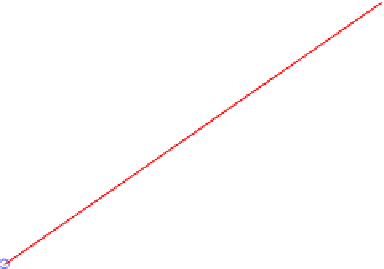Biomedical Engineering Reference
In-Depth Information
3.0
2.5
2.0
1.5
1.0
0.5
0.0
0
100
200
300
400
t
, min
FIGURE 7.7
Kinetic parametric estimation using an integral method.
7.8.2. Differential Methods
With the integral methods of approaches, one often has to assume a value for the order of
reaction. Trial-and-error may not be everyone's favorite. To avoid the trial-and-error nature
of the integral method, the experimental data in
Tab l e 3
can be differentiated to obtain
C
A
0
1
n
k
f
13
n
d
C
C
z ¼
d
t
¼ k
f
C
C
C
C
(7.46)
2
29
The values of
z
at selected values of
C
C
's can be obtained either through direct numerical
differentiation of the data (
C
C
,
t
) series or by first regressing the data series according to
a polynomial form
C
C
¼ a
0
þ a
1
t þ a
2
t þ a
2
t
2
þ a
3
t
3
.
(7.47)
and then differentiating to obtain the derivative or
z
.
By so doing, one effectively reduces the differential model to an algebraic regression
model. However,
Eqn (7.46)
is still nonlinear. One will need to use a nonlinear regression
program to perform the parametric estimation. Therefore, this is still not favorable in the
Physical Chemistry and Reaction Engineering texts. Steps are often taken during the plan-
ning of experiments to avoid this situation. For this problem, one can notice that if
C
C
is small,
Eqn (7.46)
may be approximated by
z
z
k
f
C
A
0
1
n
C
C
(7.48)
2
Equation
(7.48)
can be rearranged to give
C
A
0
1
2
ln z
z
ln k
f
þ n ln
C
C
(7.49)



































































Search WWH ::

Custom Search